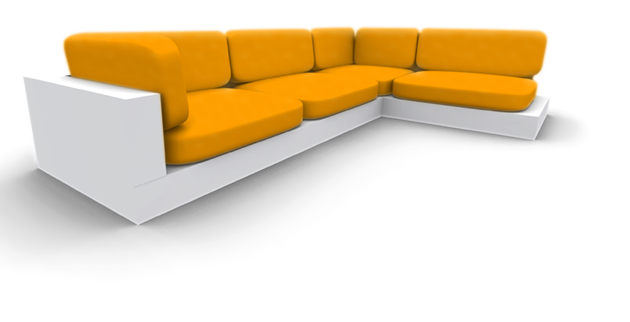| Autor | Beitrag | ||||
|---|---|---|---|---|---|
Sidi       
Beiträge: 47 Delphi XE5 Prof. |
Hallo zusammen,
ich habe ein Fenster das mit Form1.showmodal geöffnet wird. Im Ereignis Form1.onShow werden Befehle abgearbeitet und der Fortschritt in einer TProgressbar dargestellt. Wenn ich nun am Ende der Anweisungen, also noch im Ereignis Form1.onShow, die Anweisung Form1.close eingebe, wird diese Anweisung nicht ausgeführt. Wie kann ich ein Fenster automatisch nach Abarbeitung der Anweisungen schließen?? Gruß Sidi |
||||
Boldar       
Beiträge: 1555 Erhaltene Danke: 70 Win7 Enterprise 64bit, Win XP SP2 Turbo Delphi |
Meines wissens geht das nicht. Verwende onactivate oder Stelle einen Timer ein.
|
||||
Sidi         
Beiträge: 47 Delphi XE5 Prof. |
in Form1.onActivate habe ich es auch schon versucht, mit dem selben Ergebnis
|
||||
Boldar       
Beiträge: 1555 Erhaltene Danke: 70 Win7 Enterprise 64bit, Win XP SP2 Turbo Delphi |
Dann stelle in .show einen Timer auf enabled und im Timer.ontimer das self.hide, stelle Intervall sehr kurz ein und dann sollte es den Gewünschten effect geben.
|
||||
martin300       
Beiträge: 186 Erhaltene Danke: 2 |
Von dort wo Form1.showmodal geöffnet wird sollte es auch
wieder zugemacht werden. Bsp:
|
||||
Xentar       
Beiträge: 2077 Erhaltene Danke: 2 Win XP Delphi 5 Ent., Delphi 2007 Prof |
Man könnte das Formular auch einfach dynamisch erzeugen.
Sollte dann natürlich nicht vergessen, dies in den Projektoptionen aus den automatisch erzeugten Formularen rauszunehmen.
_________________ PROGRAMMER: A device for converting coffee into software. |
||||
jaenicke       
Beiträge: 19314 Erhaltene Danke: 1747 W11 x64 (Chrome, Edge) Delphi 11 Pro, Oxygene, C# (VS 2022), JS/HTML, Java (NB), PHP, Lazarus |
Wie wäre es, wenn du das Fenster einfach nur mit Show anzeigst und einfach dein anderes Fenster derweil mit Enabled := False unbenutzbar machst? Dann kannst du deine Fortschrittsanzeige direkt von dort aktualisieren wo du auch Show aufrufst und dort kannst du dann das Fenster auch wieder verstecken und dein anderes Fenster wieder aktivieren.
Kleines Beispiel im Anhang. |
||||
Boldar       
Beiträge: 1555 Erhaltene Danke: 70 Win7 Enterprise 64bit, Win XP SP2 Turbo Delphi |
mach einfach in der mit showmodal aufgerufenen Form
Zuletzt bearbeitet von Boldar am So 19.10.08 11:21, insgesamt 1-mal bearbeitet |
||||
jaenicke       
Beiträge: 19314 Erhaltene Danke: 1747 W11 x64 (Chrome, Edge) Delphi 11 Pro, Oxygene, C# (VS 2022), JS/HTML, Java (NB), PHP, Lazarus |
|
||||
Lannes       
Beiträge: 2352 Erhaltene Danke: 4 Win XP, 95, 3.11, IE6 D3 Prof, D4 Standard, D2005 PE, TurboDelphi, Lazarus, D2010 |
Hallo,
die Reihenfolge der Ereignisse: • OnCreate • OnShow • OnActivate • OnPaint Du brauchst • OnAfterActivate Kleines Beispiel: MainForm:
SubForm:
_________________ MfG Lannes (Nichts ist nicht Nichts) and ('' <> nil ) and (Pointer('') = nil ) and (@('') <> nil ) |
||||
martin300       
Beiträge: 186 Erhaltene Danke: 2 |
Kopie aus der Delphi Hilfe:
Warnung: Sie dürfen eine Komponente nie in einer ihrer eigenen Ereignisbehandlungsroutinen oder in einer Ereignisbehandlungsroutine eines untergeordneten Objekts freigeben. Geben Sie beispielsweise auf keinen Fall eine Schaltfläche oder ihr übergeordnetes Formular in der OnClick-Ereignisbehandlungsroutine der Schaltfläche frei. Um ein Formular freizugeben, ruften Sie seine Methode Release auf. Dadurch wird sichergestellt, dass das Formular erst aus dem Speicher entfernt wird, wenn die Ausführung seiner eigenen und der Ereignisbehandlungsroutinen seiner Komponenten beendet ist. Das Bsp von Xentar finde ich recht gut. |
||||



















